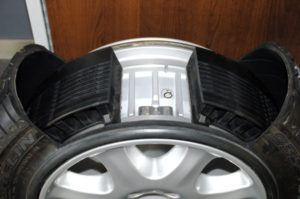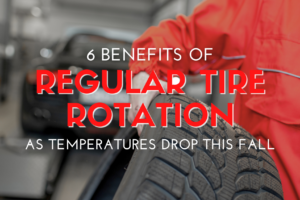 Run-flat tires have been around since the 1980’s. Today, they are more popular than ever. Some automobile manufacturers include them as standard equipment on new vehicles. More and more consumers are asking about run-flat tires as a replacement option for their vehicle. So, how do they work?
Run-flat tires have been around since the 1980’s. Today, they are more popular than ever. Some automobile manufacturers include them as standard equipment on new vehicles. More and more consumers are asking about run-flat tires as a replacement option for their vehicle. So, how do they work?
There are two primary types of run flat tire systems: the self-supporting system and the support ring system.
In most self-supporting run flat tire systems, the tire will feature reinforced sidewall construction. This system continues to support the vehicle in the event of air loss. This construction allows continued operation after the loss of air pressure. Speeds and distances are specified by the manufacturer, generally up to 50 miles at 50 miles per hour.
Support ring run flat tire systems, on the other hand, employ a ring of hard rubber or another structure that can support the vehicle’s weight in an air loss situation.
Since they continue performing even though they’re “flat,” all run flat tires, regardless of the specific system type, may only be used on a vehicle equipped with a Tire Pressure Monitoring System (TPMS). The TPMS alerts you as soon as one of your tires lose pressure. Without it, you might not know you were driving on an underinflated tire.
Advantages of Run Flat Tires
If you happen to have a flat tire, you don’t have to change your tire in dangerous or uncomfortable conditions. This is perhaps the biggest benefit of run flat tires and is the one of the reasons why they were designed. With conventional tires, you have to replace a flat on the spot or have your car towed.
In a puncture situation, run flats are more stable than conventional tires. Since they’re made to support your vehicle even when they contain no air, run flat tires will help you maintain better control in a complete air loss situation compared to conventional tires.
Disadvantages of Run Flat Tires
Run flat tires can be considerably more expensive than traditional tires. Run flat tires often cannot be repaired due to the interior construction of the tire. Most times, a simple nail puncture might can be repaired from the inside of the tire on a traditional tire. This might not be the case on a run flat tire.
Most new cars equipped with run flat tires have no spare tire included. If you have a tire issue and you are traveling in the middle of no-where, and no spare tire, your options are extremely limited.
Run flat tires generally make more noise and ride rougher than traditional tires.
Conclusion
If you have questions about your run-flat tires, feel free to give us a call or stop by our store. Postle Tire Barn is a locally owned and family operated business, having served the Tuscaloosa and West Alabama area for more than 35 years.



Recent Comments